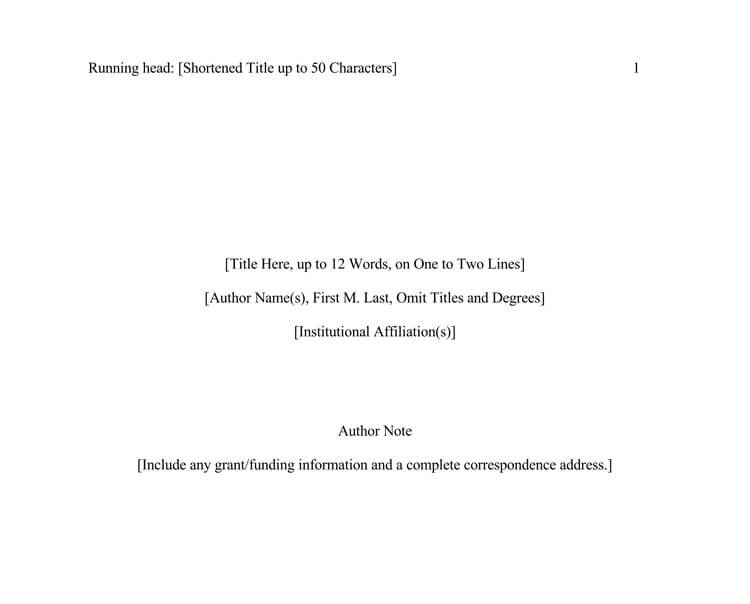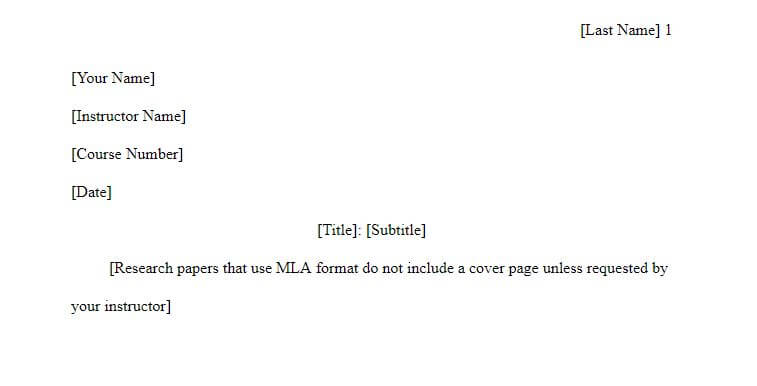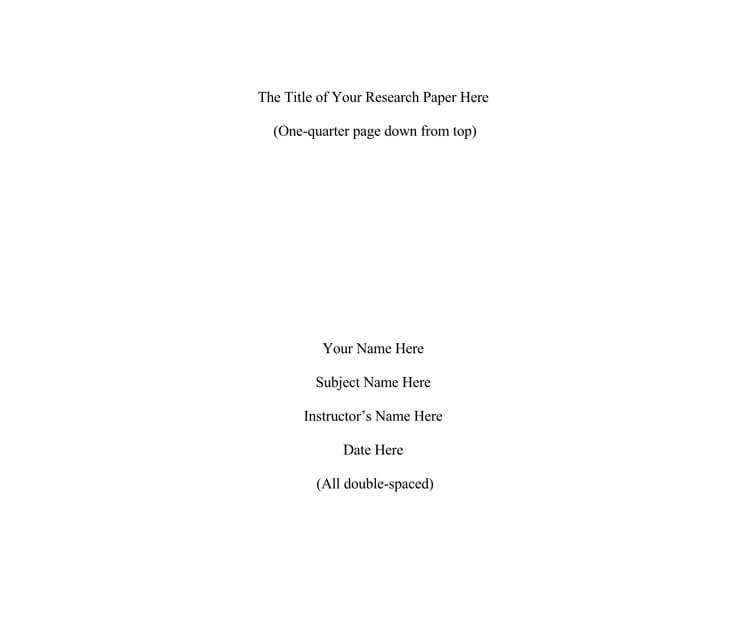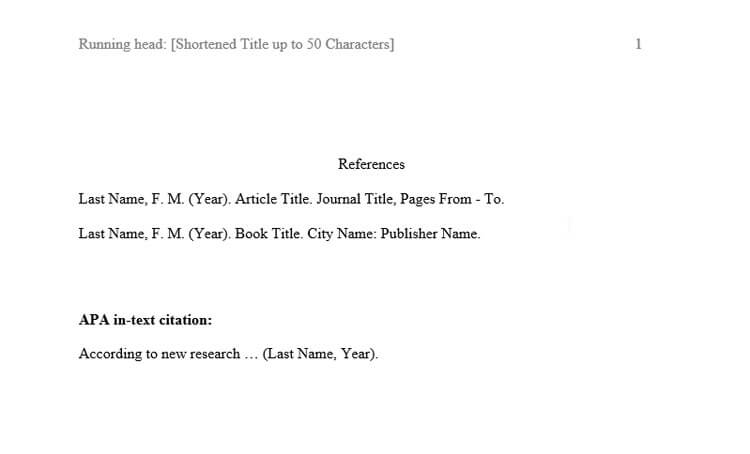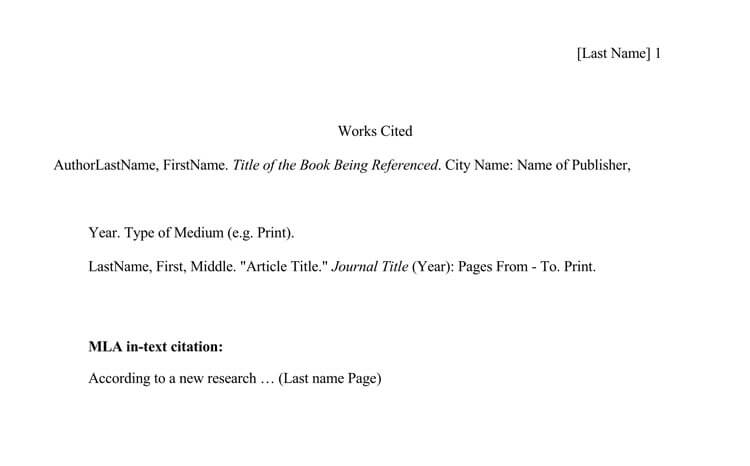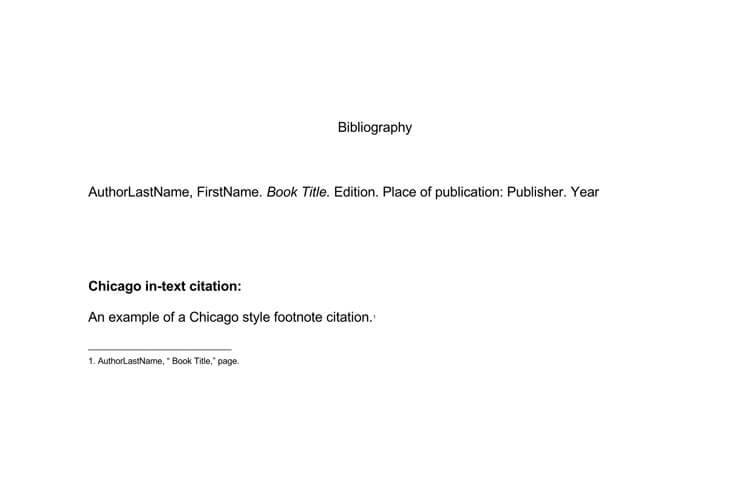All research papers aren’t the same. Different professors and academic institutions have preferred formats that every student or research writer must follow to write a proper paper. In other words, every research paper has a guide or structure it must follow, irrespective of the nature of the research work.
A Research Paper Format is the skeletal view of a research essay or paper. It highlights all the pertinent details that a research writer put together to produce their research document, essay, thesis, paper, etc.
Besides being compliant with your supervisor or institution’s research paper format, working with an outline during research paper writing will help organize your work better. You’ll also have a solid template to work with to make your job easier and save time.
A research paper format will also serve as a visual guide and reminder to include all the essential research details in your paper or essay. This way, you won’t unintentionally leave out any detail.
A research paper has three major sections; an introduction, a body, and a conclusion. And each section has its specific formatting rules. Breaking your essay down into these components will help you focus on and develop one part at a time without feeling overwhelmed.
In this article, you’ll learn about how to format a research paper and the different formatting options to consider building a solid research paper or essay.
Outline of a Research Paper
As stated earlier, you can break down your paper, essay, or any form of academic writing into three significant components – the introduction, body, and conclusion. Each section contains specific information that you can build on. With this holistic approach, you’ll stay organized and follow through on each unit. You’ll also be able to further develop your essay into sub-sections like literature review, research methodology, results, etc., without breaking a sweat.
Interestingly, a research paper outline works regardless of the research or paper you’re working on. Every research paper builds on this template to become a complete body of work.
Now, let’s discuss these sections and their specific purposes in detail:
Introduction
The introduction is one essential component that makes an outstanding research paper. An introduction should be compelling and concise enough to grasp a reader’s attention and give a general overview of the research.
The introduction has various goals. Apart from presenting the topic to the readers compellingly, it states the problem as an essay will be shedding light on and further offer viable solutions to the problem. It also summarizes existing research in the same field or subject and helps readers understand your approach and arguments regarding the subject matter.
Some people write their introduction last because they want a complete narration of their paper without leaving out any detail. However, every researcher has individual preferences, so it’s vital to stick to what works for you. The most important thing is to have a superb paper or essay at the end of the day.
Body
The body is the richest part of an essay or paper. You may consider the body as the juicy part with all the essential details and the researcher’s findings. Usually, the body includes the writer’s argument in support of the research’s main point or thesis.
In this section, you’ll need to build on your introduction, discuss it further, and provide facts and insight into your research methods and the subsequent findings or answers related to your research paper.
A significant component of this section is the literature review which documents all the literary sources (books, journals, online resources, etc.) referenced to support your standpoint or hypothesis.
For research works with investigative data that needs validation, you’ll need to explain your data findings and results and other discoveries from your study. Generally, this involves using graphs, charts, tables, and other pictorial representations.
However, you should ensure you explain your findings/discoveries represented by these pictures.
Ultimately, the body is the most substantive part of a research that thoroughly explains everything the essay is about, from problems to arguments and solutions.
Conclusion
The conclusion is the final part of the research. It summarizes all the research paper content and highlights the researcher’s points, arguments, and theories. Usually, there’s no need to add new information to the conclusion. Instead, go over the paper’s main points, wrap up your ideas, and leave the reader with a strong final impression.
Bonus Tip: Ensure you re-emphasize the paper’s research statement and mention future research, if any, in your conclusion.
Formatting Styles for Academic Research Paper
There are different formatting styles for academic writing. In some cases, these styles are also referred to as citation styles. Whatever the case is, you’ll need to follow a particular research paper format when doing your research.
Usually, your school or professor specifies their most preferred citation style for you to follow judiciously. And there are five common formatting styles you can adopt for your academic paper. They are:
AMA
The AMA (American Medical Association) formatting style is for academic writings, essays, or papers in the medical and scientific space. It’s recommended for authors and editors to publish content related to medicine, health, and biological sciences.
APA
The APA (American Psychological Association) format is generally used for academic writings related to psychology, social sciences, and general academic papers. It includes document sources, a detailed referencing structure, and proper in-text citations.
Chicago
The Chicago style is peculiar to general publications like magazines, newspapers, and non-academic books. You can also use this style for documentary notes and author dates. A documentary note is familiar in the sciences, while the author’s date is peculiar to the social sciences.
MLA
The MLA (Modern Language Association) style consists of the peculiar guidelines for formatting research writing for English, literature, arts, and humanities. It also provides writers with a specific reference system for citation.
Turabian
The Turabian is named after Kate Turabian, an educator from the University of Chicago. The format suggests footnotes as a reference style to writers in humanities and other universal subject disciplines.
Note that all these formatting styles have their requirements and use cases. And once you begin your essay with a particular formatting style, you must consistently stick to it throughout your research. Failure to do so will render your work substandard and cost you marks or points.
How to Format a Research Paper
The two major formatting styles you’ll most likely use for academic studies and research are APA and MLA. However, anyone who has previously written a research essay knows it’s challenging to keep track of all its moving parts. Even sticking to the detailed formatting guideline of any style can be intellectually challenging.
But if you get it right, you’ll have a good research paper that lets your readers know you’re a serious academic who put in a lot of work. You’ll also earn respect and get plaudits from the academic community regarding awards, commendations, publications, etc.
Similarly, you’ll get good grades for your detailed research on the topic and having your citation done correctly.
To make the process easier for you, we’ll highlight the general formatting guideline in line with the American Psychological Association (APA) requirements. Writers across different academic disciplines can adopt the style, so it makes sense to use it as the formatting yardstick.
Paper
The recommended paper for standard formatting a research paper is a one-sided white paper of good quality. The paper dimension should be 8.5” x 11”.
Margins
Type your essay with a margin of 1” or 2.5cm (about ten typed spaces) on all sides of the paper – top, bottom, left, and right. This will help define where a line of text begins and ends. However, page numbers should be placed 0.5” (1.25cm) from the upper-right corner of the paper.
Font
According to the 7th edition of the APA Publication Manual, research writers must choose a legible font and consistently stick to it throughout the essay or paper. By doing so, no one will have trouble reading the paper.
The APA format doesn’t mandate a particular font style for academic writing. So, writers should comply with the fonts and font sizes that their supervisors, publishers, or educational institutions recommend if in doubt.
You may also resort to universal font styles like Arial, Times New Roman, Sans Serif, Lucida Sans Unicode, Averter, etc. Maintain a range of sizes from 10-point to 12-point as well.
Title page
Sometimes, you may not be required to include a title page in your research paper. But if you have one, it should contain the paper title, author’s name, and the academic institution. It should also include an author note, and if you’re a student, you should include the course number, course name, instructor name, and the submission date.
The title should be written in upper- and lower-case characters with bold fonts. It would also be best if you focused on the significant keywords and were as concise as possible. It should also not contain abbreviations, slurs, slang, or unnecessary words.
The author’s name should come after the title and follow the first name, middle name (or initials), and last name format. Refrain from using titles like Dr. or degrees like Ph.D.
After the author’s name, write the academic institution next. This includes the school’s name, location, and other affiliations like your department.
Finally, you should add an author note underneath the institution details. This should be done in the bottom half of the title page and broken down into a few paragraphs.
Note that a student paper doesn’t contain an author note.
Abstract
An abstract is a summary of your research findings. However, it’s not compulsory for all research papers. In other words, you should only use an abstract in papers with a hypothesis.
A good research paper has a brief abstract of about 150 – 250 words. It should also be objective and non-sentimental. In essence, you should state facts only, summarize your research question, and state your findings.
Page numbering and paragraphing
Ensure you number all the pages of your paper in the upper right-hand corner. Then, flush against the right margin and leave a space of 0.5” from the top of the paper.
According to the MLA handbook, you may type your last name before the page number in case the pages get misplaced. Also, write page numbers in Arabic numerals if not specified by your teacher or institution. There’s also no need for fancy decorations, underlining, enclosing with hyphens, parenthesis, asterisks, or adding prefixes like “Page”, “Pg.” or “P”. There’s also no need to use a full stop after the page number.
Spacing (between lines and words)
No matter the form you’re writing your essay in – typed, handwritten, or printed, you should have a double space between every line and an inch margin on every side of the document for additional comments from reviewers like your professor.
You should also leave a space between words and another space after a comma, colon, or semi-colon. But don’t include spaces in front of punctuation marks.
Indentation
Add a 1” indent on the left margin of all the pages before writing on them. If you’re typing on a typewriter or computer, indent 0.5 inches at the start of each paragraph. Ensure you’re consistent with your choice all through the writing.
Right justify and automatic hyphens
Don’t right justify all your writing or automatically format hyphens if you’re typing your essay on the Word processor. Instead, you should justify left and insert hyphens manually, if necessary,
Table of contents
You don’t need a table of contents when writing a short essay. But, for lengthy essays or academic writings, you should use a table of contents to pin-point individual headings and their pages.
In-text citation
Experts recommend that academic writers should include citations wherever they quote or paraphrase existing literature within their paper. This is done to avoid plagiarism and give readers the option to look up the academic discourse.
You should include the author’s or (authors’) name and the year the cited work was published. In addition, if it’s a direct quote from the author, you should include the page number from where the quote exists in the author’s publication.
You can have the year of publication and page numbers within or at the end of the sentence. But they must both be in parenthesis.
Reference list
Remember the brief citations in the body of the paper? You should fully reference them in this section. First, ensure that what you have in your references list aligns with the in-text citations, then provide additional bibliographical information of all the sources cited. This will help you give proper credit and provide readers with more sources to read from.
The information provided should include:
- The author or authors’ name(s).
- The year of publication.
- The source’s full title.
- The city of publication (if the referenced material is a book).
- The periodical or book name (for articles and essays).
- The volume number, pages, and issue number (for magazines and journal articles).
- The URL source (for online/web sources).
Note that the references should be listed alphabetically in line with the authors’ last names.
Research Paper Format Samples
Writing an academic paper is tedious. There are many moving parts, from carrying out research to reading different scholarly articles and literature. In addition, adding a compulsory formatting standard to the to-do list can be mentally exhausting. Sometimes, this alone can take hours or days, depending on the length of your work.
We offer free online research paper format templates to help academic writers complete their work faster and much more manageable. These ready-to-download templates will come in handy when writing any academic paper. Interestingly, we have templates for various academic styles. So all you need to do is select the most suitable one and use it on the go.
Conclusion
Writing without a guideline will leave any work disorganized and difficult to read. However, with accurate citation and formatting guidelines, writers will have a spectacular body of work that others can take seriously and consider valuable, especially in academia. In other words, for your academic paper, essays, and other scholarly writings, you should ensure you don’t only work hard to cite your sources correctly. Still, you also follow through with the formatting requirements.
Doing so will give you great reviews and grades, and you can also have your work published in journals and other academic publications. You’ll also be able to efficiently educate your readers about the research’s subject matter and connect them with additional learning resources to gain more knowledge. Working with a guide takes time, effort, energy, and other resources, but with a research paper template, you’ll save time and focus on other essential parts of your work. At here, we have free downloadable templates in different formats that students and other academic writers can use to format research papers.
